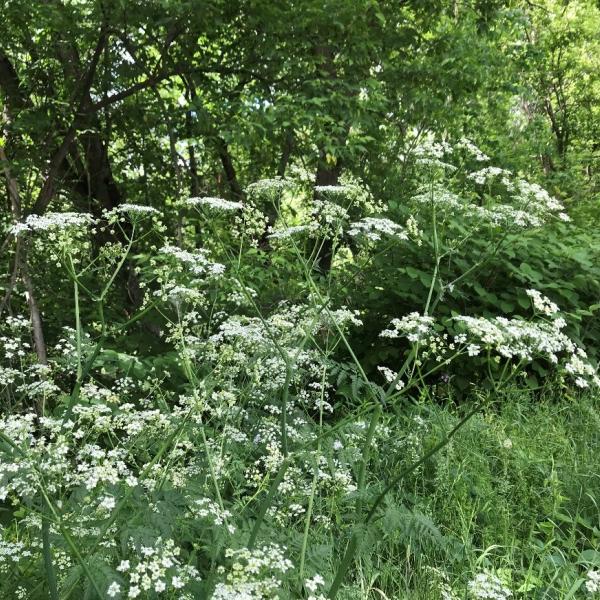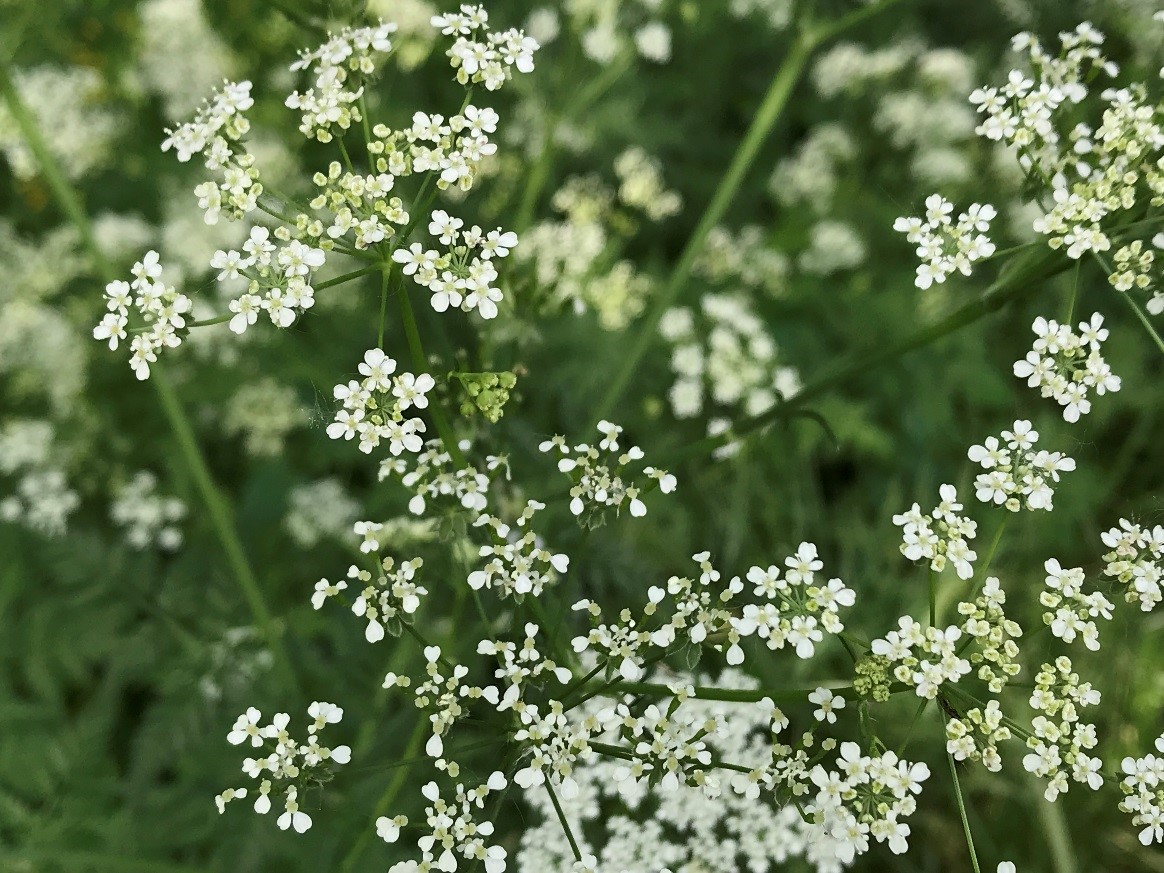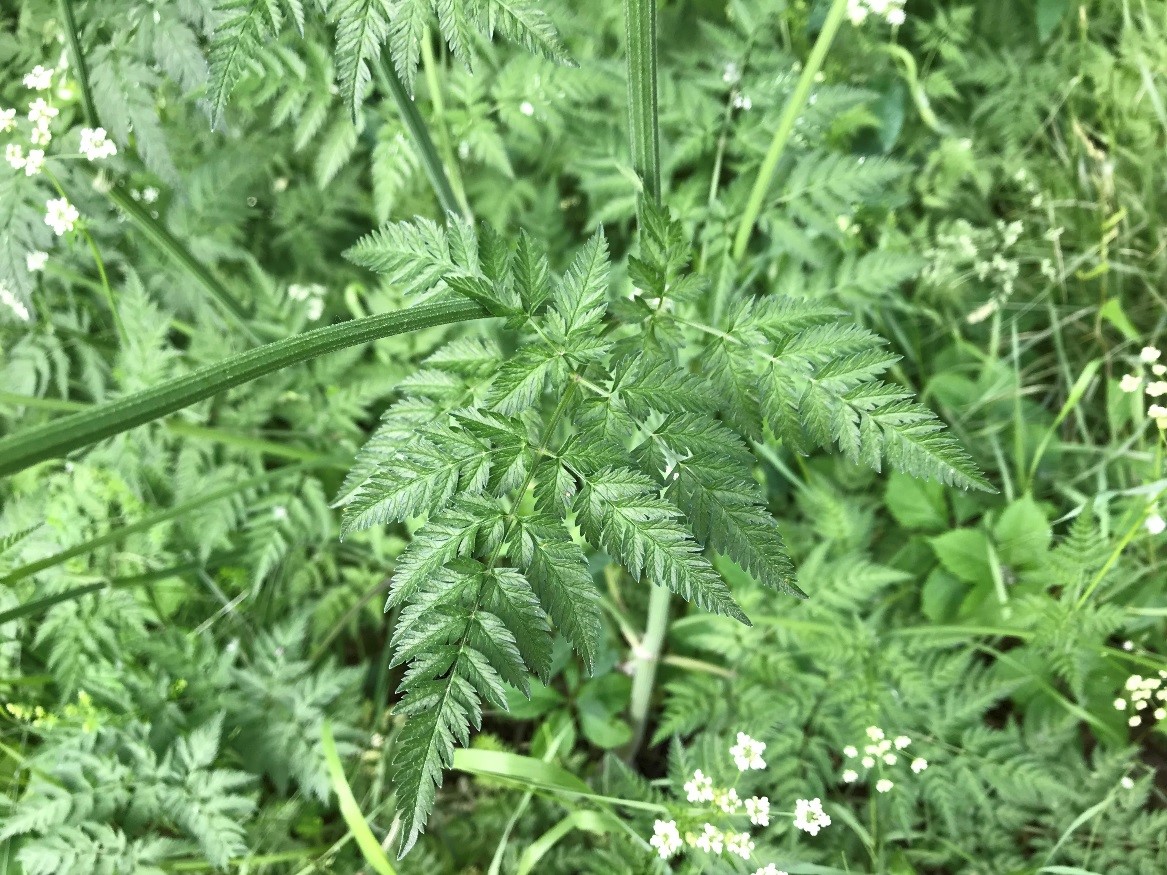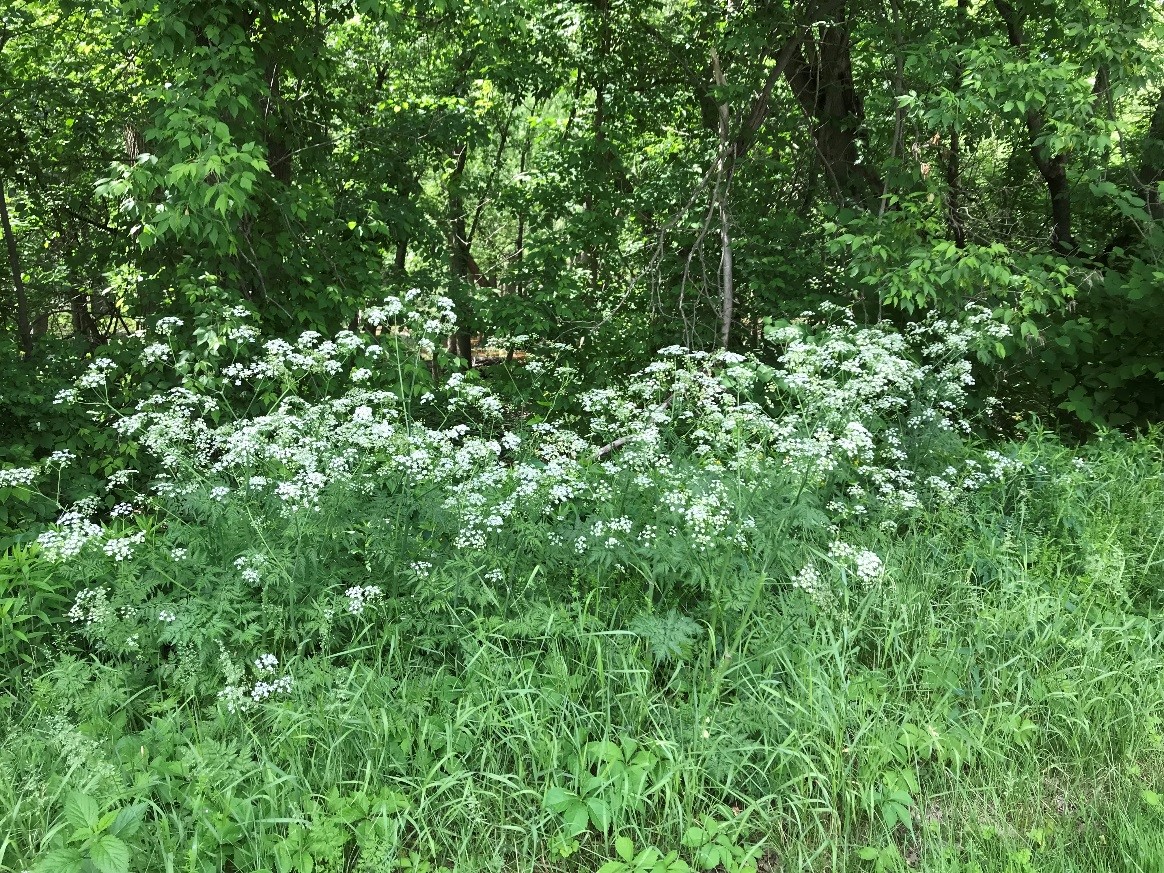
Many invasive plants in Vermont start blooming in May. Keep an eye out for one obvious bloomer this time of year, Wild Chervil (Anthriscus sylvestris), or also commonly called “cow parsley”. This invasive plant can be seen alongside roads, and is notable in our rolling Vermont fields. This is a biennial herbaceous plant within the carrot family, Apiaceae. In Vermont, there are two introduced Anthriscus species documented outside of cultivation, and include Wild Chervil and its close relative, Garden Chervil (Anthriscus cerefolium). The name, Chervil, comes perhaps from Latin and Greek roots, collectively meaning “leaf to enjoy”.
Wild Chervil originates from Europe, and was recorded in New England in the early 1900s. Though its origins to North America are unknown, it has seen reintroductions over time as a garden ornamental, and in seed mixes. In Vermont, it is common to see this plant along roadways, and in meadows and fields.
Often confused for Queen Ann’s Lace (Daucus carota) which blooms later in the summer, Wild Chervil can be distinguished by a lack of “bracts” (small feathery leaves, which, in this case, are found under the D. carota flower umbel). It can reach heights of 3-6 feet. At these heights, Wild Chervil often shades out other plants from growing. The stems are hollow, hairy towards the base, ribbed, green, and have a fringe of hair at each node. It has a tap root, much like a carrot. The densely packed flower umbels produce hundreds of seeds. It spreads by these seeds, and outcompetes native plants for growing space and other resources. This documented behavior, and its continued spread in Vermont are reasons this species is listed on Vermont’s unofficial invasive plant “Watch List”.
You can take pro-active steps to reduce the spread of Wild Chervil:
*This plant can be a common part of “wildflower mixes”, so check the species list before buying.
*If you mow or cut down an area with Wild Chervil, make sure to clean your mowing equipment. If you are mowing after seed has set (usually after June), you may spread the seed unintentionally on your mower.
To learn more about Wild Chervil, check out these additional resources:
Pennsylvania Department of Conservation and Natural Resources
St. Lawrence-Eastern Lake Ontario Partnership for Regional Invasive Species Management
Wisconsin Department of Natural Resources

The flowers of Wild Chervil are small, white, and possess 5 petals.

Wild Chervil leaves are compound, and have a feathery fern-like appearance.

Roadside infestation of Wild Chervil.
Article/Photo Credit: E. Spinney, Vermont Forests, Parks & Recreation